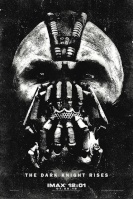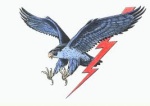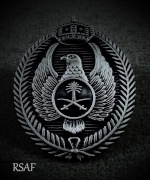معـا لـحمـايـة الــوطــن
مـــلازم أول


الـبلد : 
المهنة : بطال بدون عمل .
التسجيل : 24/05/2012
عدد المساهمات : 790
معدل النشاط : 778
التقييم : 8
الدبـــابة : 
الطـــائرة : 
المروحية : 


|  موضوع: اغرب جلسه للقنص موضوع: اغرب جلسه للقنص  الخميس 16 أغسطس 2012 - 22:40 الخميس 16 أغسطس 2012 - 22:40 | |
| |
|
salih sam
لـــواء


الـبلد : 
المهنة : College student
المزاج : اللهم سلم السودان و اهل السودان
التسجيل : 09/05/2011
عدد المساهمات : 7924
معدل النشاط : 6296
التقييم : 271
الدبـــابة : 
الطـــائرة : 
المروحية : 

|  موضوع: رد: اغرب جلسه للقنص موضوع: رد: اغرب جلسه للقنص  الخميس 16 أغسطس 2012 - 22:46 الخميس 16 أغسطس 2012 - 22:46 | |
| اعتقد ان المقصود منها هو زياده ثبات البندقه .. و غالبا الهدف بعيد
|
|
FALCON
مشرف سابق
لـــواء


الـبلد : 
العمر : 41
المهنة : انسان
المزاج : ببساطه مزاج انسان؟؟
التسجيل : 15/02/2012
عدد المساهمات : 6243
معدل النشاط : 5539
التقييم : 515
الدبـــابة : 
الطـــائرة : 
المروحية : 

|  موضوع: رد: اغرب جلسه للقنص موضوع: رد: اغرب جلسه للقنص  الخميس 16 أغسطس 2012 - 23:24 الخميس 16 أغسطس 2012 - 23:24 | |
| الندقيه التى يحملها اعتقد انها طرازSharps rifle وهى صاحبت رد فعل قوى وهو بهزه الطريقه يعمل على زياده سبات البندقيه ومنع اكتشاف مكانه من العدو لكن هنذه الصوره اعتقد انها تم رسمها اثناء مسابقه رمايه لذلك يقوم الرامى بتثبيت البندقيه لذياده الدقه واالااستفاده القصوى من قائم التصويب المعدنى
ويكفى ان نعرف ان البندقيه المستخدمه مدها يصل الى 1000 يارده
وان الرامى حصل على 3 بطولات للرماى على الظهر وكان يصيب 27 هدف من اصل 28
وهذ صوره للبندقيه وماصفتها

| Place of origin United States United States | Service history In service| 1850–1881 | Production history Designer| Christian Sharps | Designed| 1848 | Number built| 100,000+ | Variants| carbine | Specifications Weight| 9.5 lb (4.3 kg) | Length| 47 inches (1,200 mm) |
| Cartridge| .52-caliber 475-grain projectile with 50-grain (3.2 g) cartridge, later converted to .45-70 Government in 1873. | Action| Falling Block | Rate of fire| 8–10 shots per minute | Muzzle velocity| 1,200 ft/s (370 m/s) | Effective range| 500 yd (460 m) | Maximum range| 1,000 yd (910 m) | Feed system| 1 round | Sights| open ladder type |
المصدر http://www.researchpress.co.uk/riflemen/usa/fulton_h.htm http://en.wikipedia.org/wiki/Sharps_rifle
عدل سابقا من قبل FALCON في الجمعة 17 أغسطس 2012 - 2:55 عدل 1 مرات |
|
Tomahawk
مشرف سابق
لـــواء


الـبلد : 
المهنة : SWE
المزاج : ;)
التسجيل : 01/12/2011
عدد المساهمات : 2229
معدل النشاط : 2051
التقييم : 204
الدبـــابة : 
الطـــائرة : 
المروحية : 

| |
FALCON
مشرف سابق
لـــواء


الـبلد : 
العمر : 41
المهنة : انسان
المزاج : ببساطه مزاج انسان؟؟
التسجيل : 15/02/2012
عدد المساهمات : 6243
معدل النشاط : 5539
التقييم : 515
الدبـــابة : 
الطـــائرة : 
المروحية : 

|  موضوع: رد: اغرب جلسه للقنص موضوع: رد: اغرب جلسه للقنص  الخميس 16 أغسطس 2012 - 23:46 الخميس 16 أغسطس 2012 - 23:46 | |
| هنا شرح للوضع
Rifle Shooting Positions: The Back Position
In our last post, we looked at the squatting position.
In this post, we will look at a shooting position that was more popular
in the 19th century, but is not seen much these days -- the back position.
Like the name indicates, the back position consists of the shooter lying
with his back on the ground, as the following two images show:
  Click on images to enlarge. Images are in the public domain. Click on images to enlarge. Images are in the public domain.
When we studied the prone position
earlier, one of the disadvantages of that position that we'd noted was
that it isn't suitable in places where the ground in front of the
shooter slopes steeply up or down. The back position can be used in such
conditions. This makes the position useful for long range shooting,
where the rifle needs to be elevated to a high angle; and also where the
rifle needs to be shot down a steep slope. It is also useful for
long-bearded men who do not wish to get mud and dust in their carefully
groomed facial hair.
To assume this position, the shooter first sits on the ground facing the
target and holding the rifle across the body. The shooter then lies
down on the ground on his back and turns slightly to the right, to allow
his right thigh to rest squarely on the ground. The shooter then bends
his left knee (as in the first picture) or places his left leg on top of
the right leg (as in the second picture). The barrel of the rifle is
then placed on the side of the right knee (first picture) or left knee
(second picture). The right elbow rests on the ground and the right hand
is placed on the trigger. The butt of the rifle is in the hollow of the
right shoulder and the left hand serves to hold the butt in place. The
head is raised off the ground, to view the sights properly. Notice that
in the first image, the shooter grabs a bit of his left sleeve with his
teeth, in order to keep his head steady.
Like the prone position that we studied earlier, this position requires
open land in front of the shooter, as it cannot be used where there are
bushes or tall grass obscuring the target.
There are some other variations of the back position, such as the Fulton
position, invented by a Henry Fulton, who was a civil engineer and
later served in the Civil War as a lieutenant of the 12th Regiment New
York National Guard, rising up in the ranks to become a Major.
 The Fulton Position.Click on image to enlarge. Public domain image. The Fulton Position.Click on image to enlarge. Public domain image.
In the Fulton position, the shooter lies on his back and draws his knees
in a V-shape and crosses his legs. This allows him to position his
rifle barrel between the crossed legs. The left arm is then positioned
behind the shooter's neck, thus allowing him to support his head; and
the left hand grabs the butt of the rifle. While this looks a bit
unusual, bear in mind that this gentleman won the first Wimbledon Cup in
1875 and was part of the US team that won the first international rifle
shooting match ever (the original Palma match) in 1876. The National
Rifle Association also awards the Henry Fulton trophy, named after the
man, annually since 1987 to the highest scorer of the team match in the
World Long Range Shooting Championship.
While the back position is not seen much these days, it was more popular
in the 19th century. In fact, in the first Palma match of 1876, five
out of the twelve shooters in the competition shot lying on their backs
and seven shot from the prone position. Those lying on their backs
averaged 157 points against 154 points for those using the prone
position.
وهذ ملف بديف للعمليه كلها http://www.la84foundation.org/SportsLibrary/Outing/Volume_38/outXXXVIII06/outXXXVIII06b.pdf |
|